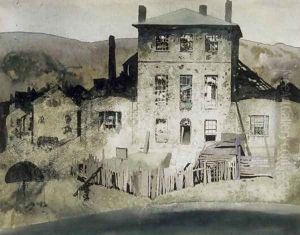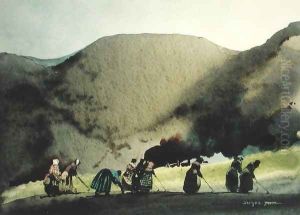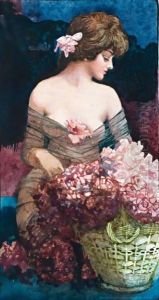Blamire Young Paintings
Blamire Young, born in Londesborough, England, on the 9th of August, 1862, was a notable watercolorist and etcher whose career flourished in Australia. Young was initially trained as an architect, attending schools such as the Royal College of Art in London, which may have contributed to the structural elements observed in his artistic work. His career took a significant turn when he migrated to Australia in 1885, initially working as a draftsman in Melbourne.
In Australia, Young's interest in art took a more serious turn. He became an art teacher at the Working Men’s College in Melbourne in 1886, now known as the Royal Melbourne Institute of Technology (RMIT). His early works were primarily in watercolor and showcased Australian landscapes and urban scenes. Young's style was unique in its application of the principles of tonalism, which emphasized atmosphere and shadow.
As he matured as an artist, Young was drawn to the Heidelberg School of painters, which played a pivotal role in the development of Australian Impressionism. Though not a core member, he was influenced by the movement, and his work began to reflect the Heidelberg School's plein air approach and interest in capturing the Australian light and landscape.
Young's contributions to Australian art were significant. He was known for his distinctive use of line and color, and his compositions often incorporated a whimsical or fantastical element. This was partly influenced by his interest in the Symbolist movement, which valued the symbolic and emotional power of art. He created a number of etchings and was involved with the Victorian Artists Society and the Australian Painter-Etchers’ Society.
In 1923, Young authored the book 'Australian Etchings and Etchers', contributing to the literature and scholarly understanding of the field. His work continued to evolve over the decades, and he became a respected figure in the Australian art scene.
Blamire Young's life was a journey of artistic evolution, marked by his embrace of Australian subjects and his development of a distinctive style that merged European techniques with an appreciation for his adopted homeland's unique qualities. He passed away on the 3rd of October, 1935, in Melbourne. His artworks remain a part of Australia's cultural heritage, preserved in major public collections, including the National Gallery of Australia and various state galleries.


